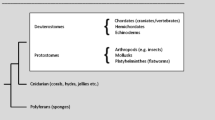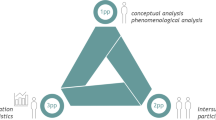Abstract
Life has semiotic nature; and as life forms differ in their complexity, functionality, and adaptability, we assume that forms of semiosis also vary accordingly. Here we propose a criterion to distinguish between the primitive kind of semiosis, which we call “protosemiosis” (following Prodi) from the advanced kind of semiosis, or “eusemiosis”. In protosemiosis, agents associate signs directly with actions without considering objects, whereas in eusemiosis, agents associate signs with objects and only then possibly with actions. Protosemiosis started from the origin of life, and eusemiosis started when evolving agents acquired the ability to track and classify objects. Eusemiosis is qualitatively different from protosemiosis because it can not be reduced to a small number of specific signaling pathways. Proto-signs can be classified into proto-icons that signal via single specific interaction, proto-indexes that combine several functions, and proto-symbols that are processed by a universal subagent equipped with a set of heritable adapters. Prefix “proto” is used here to characterize signs at the protosemiotic level. Although objects are not recognized by protosemiotic agents, they can be reliably reconstructed by human observers. In summary, protosemiosis is a primitive kind of semiosis that supports “know-how” without “know-what”. Without studying protosemiosis, the biosemiotics theory would be incomplete.




Similar content being viewed by others
Notes
For citations of Peirce we use abbreviations: CP = Collected papers, EP = Essential Peirce, and W = Writings.
Note that Peirce’s notion of object is not related to agents who interact with them. He used only the meta-agent perspective assuming that objects are the same for every agent.
Detailed analysis of the term “agent” can be found in (Sharov 2010).
Known epigenetic mechanisms can support adaptive learning within individual cells as follows from a hypothetical model (Sharov 2013).
The notion of fitness in neo-Darwinism (i.e., the relative rate of self-reproduction) provides a quantitative measure of natural self-interest but it does not capture its functional aspects. For example, mules cannot reproduce and their fitness is zero, but yet they are alive and capable of goal-directed actions at both molecular and behavioral levels. In fact, mules have inherited their goals and capacity for interpreting signs from their self-reproducing parents. But self-reproduction is necessary for the continuation of life lineages and for adaptive evolution.
By categorization we mean recognition and differentiation of objects by agents based on a large set of perceived properties, which cannot be reduced to a small number of logical gates (e.g., “AND”, “OR”) and contributes to the functional goal-directed activity of the agent (Sharov 2013).
It should not to be confused with the linguistic notion of proto-language (which is better called “ancestral language”).
References
Alexander, V. (2013). Creativity: self-referential mistaking, not negating. Biosemiotics, 6(2), 253–272.
Amit, D. J. (1989). Modeling brain function: the world of attractor neural networks. Cambridge: Cambridge University Press.
Anderson, M., Deely, J., Krampen, M., Ransdell, J., Sebeok, T. A., & von Uexküll, T. (1984). A semiotic perspective on the sciences: steps toward a new paradigm. Semiotica, 52(1/2), 7–47.
Barbieri, M. (2003). The organic codes: an introduction to semantic biology. Cambridge: Cambridge University Press.
Barbieri, M. (2008). Biosemiotics: a new understanding of life. Naturwissenschaften, 95(7), 577–599.
Barbieri, M. (2009). Three types of semiosis. Biosemiotics, 2(1), 19–30.
Bettenbrock, K., Sauter, T., Jahreis, K., Kremling, A., Lengeler, J. W., & Gilles, E. D. (2007). Correlation between growth rates, EIIACrr phosphorylation, and intracellular cyclic AMP levels in Escherichia coli K-12. Journal of Bacteriology, 189(19), 6891–900.
Bickhard, M. H. (1993). Representational content in humans and machines. Journal of Experimental and Theoretical Artificial Intelligence, 5, 285–333.
Bickhard, M. H. (1998). Levels of representationality. Journal of Experimental and Theoretical Artificial Intelligence, 10(2), 179–215.
Bickhard, M. H. (2001). Function, anticipation, representation. In D. Dubois (Ed.), Computing anticipatory systems. CASYS 2000 - fourth international conference (pp. 459–469). Melville: American Institute of Physics.
Brier, S., & Joslyn, C. (2013). What does it take to produce interpretation? informational, peircean and code-semiotic views on biosemiotics. Biosemiotics, 6(1), 143–159.
Bruni, L. E. (2008). Cellular semiotics and signal transduction. In M. Barbieri (Ed.), Introduction to biosemiotics. The new biological synthesis (pp. 365–407). Dordrecht: Springer.
Christiansen, P. V. (2002). Habit formation as symmetry breaking in the early universe. Sign Systems Studies, 30(1), 347–360.
Deacon, T. W. (1997). The symbolic species: the Co-evolution of language and the brain (1st ed.). New York: W.W. Norton.
Deely, J. N. (1990). Basics of semiotics (series: advances in semiotics). Bloomington: Indiana University Press.
Fox, G. E. (2010). Origin and evolution of the ribosome. Cold Spring Harbor Perspectives in Biology, 2(9), a003483.
García, Á. L. (2005). The grammar of genes: How the genetic code resembles the linguistic code. Bern: Peter Lang.
Gould, S. J., & Lewontin, R. C. (1979). The spandrels of San Marco and the panglossian paradigm: a critique of the adaptationist programme. Proceedings of the Royal Society of London - Series B: Biological Sciences, 205(1161), 581–598.
Hoffmeyer, J. (1996). Signs of meaning in the universe. Bloomington: Indiana University Press.
Hoffmeyer, J. (1998). Surfaces inside surfaces. Cybernetics and Human Knowing, 5(1), 33–42.
Hoffmeyer, J. (2007). Semiotic scaffolding of living systems. In M. Barbieri (Ed.), Introduction to biosemiotics. The new biological synthesis (pp. 149–166). Dordrecht: Springer.
Hoffmeyer, J. (2008). Biosemiotics: An examination into the signs of life and the life of signs. Scranton: University of Scranton Press.
Hoffmeyer, J., & Emmeche, C. (1991). Code-duality and the semiotics of nature. In M. Anderson & F. Merrell (Eds.), On semiotic modeling (pp. 117–166). Berlin: Mouton de Gruyter.
Kawade, Y. (2009). On the nature of the subjectivity of living things. Biosemiotics, 2(2), 205–220.
Krampen, M. (1981). Phytosemiotics. Semiotica, 36(3/4), 187–209.
Kull, K. (2009). Vegetative, animal, and cultural semiosis: the semiotic threshold zones. Cognitive Semiotics, 4, 8–27.
Lodish, H., Berk, A., Zipursky, S. L., Matsudaira, P., & Darnell, J. (2000). Molecular cell biology (4th ed.). New York: W. H. Freeman and Co.
Murray, N. E. (2000). Type I restriction systems: sophisticated molecular machines (a legacy of Bertani and Weigle). Microbiology and Molecular Biology Reviews, 64(2), 412–434.
Pattee, H. H. (2008). Physical and functional conditions for symbols, codes, and languages. Biosemiotics, 1(2), 147–168.
Peirce, C. S. (1931–1935). Collected Papers of Charles Sanders Peirce. Vols.1-8. Cambridge: Harvard University Press.
Peirce, C. S. (1998). The Essential Peirce: Selected Philosophical Writings (Vol. 2). Bloomington: Indiana University Press.
Phatnani, H. P., & Greenleaf, A. L. (2006). Phosphorylation and functions of the RNA polymerase II CTD. Genes and Development, 20(21), 2922–2936.
Pingoud, A., & Jeltsch, A. (2001). Structure and function of type II restriction endonucleases. Nucleic Acids Research, 29(18), 3705–3727.
Porter, S. L., Wadhams, G. H., & Armitage, J. P. (2011). Signal processing in complex chemotaxis pathways. Nature Reviews Microbiology, 9(3), 153–165.
Premack, D. G., & Woodruff, G. (1978). Does the chimpanzee have a theory of mind? The Behavioral and Brain Sciences, 1, 515–526.
Prodi, G. (1988). Material bases of signification. Semiotica, 69(3/4), 191–241.
Prodi, G (2010 [1988]) Signs and codes in immunology. In D. Favareau (Ed.), Essential Readings in Biosemiotics (pp. 328–335). Dordrecht: Springer
Saussure, F d, Bally, C, Sechehaye, A, & Riedlinger, A (1986 [1916]) Course in General Linguistics. LaSalle, Ill.: Open Court
Schuster, P. (1993). RNA based evolutionary optimization. Origins of Life and Evolution of the Biosphere, 23(5–6), 373–391.
Sebeok, T. A. (1963). Communication in animals and men. Language, 39, 448–466.
Sebeok, T. A. (1976). Contributions to the Doctrine of Signs (Vol. 5, Studies in semiotics). Bloomington: Indiana University Press.
Sharov, A. A. (1992). Biosemiotics: functional-evolutionary approach to the problem of the sense of information. In T. A. Sebeok & J. Umiker-Sebeok (Eds.), Biosemiotics. The semiotic Web 1991 (pp. 345–373). New York: Mouton de Gruyter.
Sharov, A. A. (2009). Coenzyme autocatalytic network on the surface of oil microspheres as a model for the origin of life. International Journal of Molecular Sciences, 10(4), 1838–1852.
Sharov, A. A. (2010). Functional information: Towards synthesis of biosemiotics and cybernetics. Entropy, 12(5), 1050–1070.
Sharov, A. A. (2013). Minimal mind. In L. Swan (Ed.), Origins of Mind (pp. 343–360). Dordrecht: Springer.
Taborsky, E. (2003). The six semiosic predicates. S.E.E.D. Semiotics Evolution, Energy, and Development, 3(2), 5–23.
Uexküll, J. von. (1982 [1940]). The theory of meaning. Semiotica, 42(1), 25–82.
Van Haastert, P. J., Van Driel, R., Jastorff, B., Baraniak, J., Stec, W. J., & De Wit, R. J. (1984). Competitive cAMP antagonists for cAMP-receptor proteins. Journal of Biological Chemistry, 259(16), 10020–10024.
Vehkavaara, T. (2002). Why and how to naturalize semiotic concepts for biosemiotics. Sign Systems Studies, 30(1), 293–313.
Vehkavaara, T. (2003). Natural self-interest, interactive representation, and the emergence of objects and Umwelt. Sign Systems Studies, 31(2), 547–587.
Vehkavaara, T. (2006). Limitations on applying peircean semeiotic. Biosemiotics as applied objective ethics and esthetics rather than semeiotic. Journal of Biosemiotics, 1(2), 269–308.
Vehkavaara, T. (2007). From the logic of science to the logic of the living. The relevance of Charles Peirce to biosemiotics. In M. Barbieri (Ed.), Introduction to biosemiotics : The new biological synthesis (pp. 260–262). Springer: Dordrecht.
Vo, N., & Goodman, R. H. (2001). CREB-binding protein and p300 in transcriptional regulation. Journal of Biological Chemistry, 276(17), 13505–13508.
von Uexküll, J. (1957). A stroll through the worlds of animals and men: A picture book of invisible worlds. In C. H. Schiller (Ed.), Instinctive behaviour: the development of a modern concept (pp. 5–80). New York: International Universities.
Witzany, G. (2010). Biocommunication and natural genome editing. Dordrecht: Springer.
Acknowledgments
This research was supported by the Intramural Research Program of the NIH, National Institute on Aging, and by the School of Social Sciences and Humanities, University of Tampere. The content of this paper is not endorsed or suggested by the funding agencies.
We thank anonymous reviewers for valuable input about this paper.
Author information
Authors and Affiliations
Corresponding author
Rights and permissions
About this article
Cite this article
Sharov, A.A., Vehkavaara, T. Protosemiosis: Agency with Reduced Representation Capacity. Biosemiotics 8, 103–123 (2015). https://doi.org/10.1007/s12304-014-9219-7
Received:
Accepted:
Published:
Issue Date:
DOI: https://doi.org/10.1007/s12304-014-9219-7




